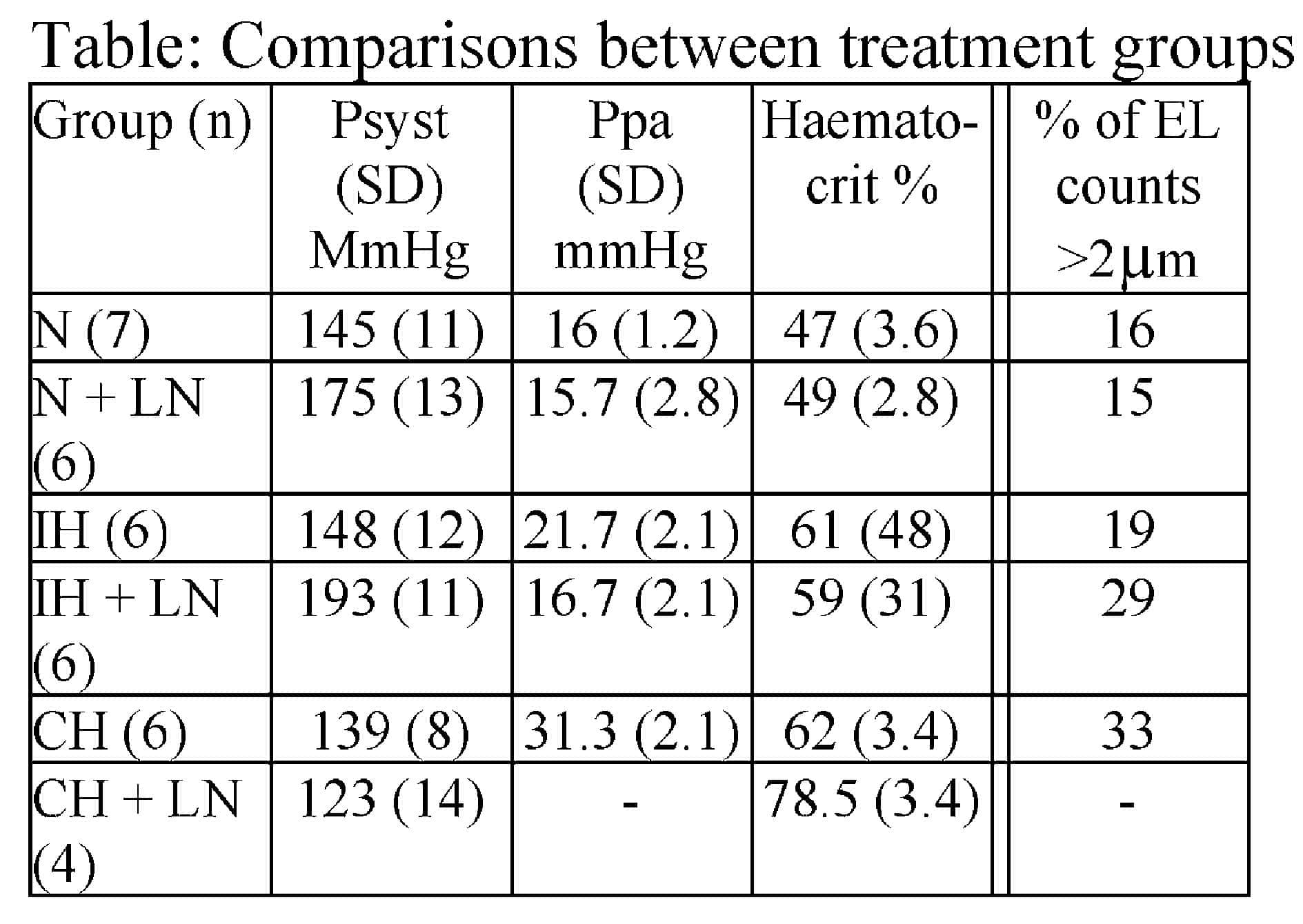In children sleep apnoea (SA) causes cardiac and pulmonary vascular changes. SA is also common in the elderly where it is frequently associated with hypertension. In elderly rats (BW~500g), we induced hypertension by inhibition of nitric oxide synthase (NOS) with L-nitro arginine methyl ester (LN, 300 mg ml-1 in drinking water) and simulated SA by exposure to intermittent hypoxia (IH: 10 % O2 4h/day, 56 exposures). These were compared with continuous hypoxia (CH: 10 % O2 for 56 days) and normoxia (N) groups, each with and without LN. Systemic (Psyst) and pulmonary (Ppa) arterial pressure were measured under thiopentone anaesthesia (100 mg kg-1, ip).
After rats were killed humanely (lethal anaesthetic, ip), heart weights and lung vessels were assessed. The ratio of right to left heart weights (RV/LV+septum) was significantly raised in CH and CH+LN (Student’s unpaired t test). There were no changes in the number of thick-walled peripheral vessels within the acinus, but we found changes in wall-thickness. Hypoxia causes development of a new elastic lamina (EL) internal to the original, which narrows the lumen, but is unevenly distributed around it. We measured the greatest distance between outer and new inner elastic lamina with an eyepiece graticule and found a clear trend towards thicker walls in hypoxia (Table). The low pulmonary artery pressure (Ppa) in IH+LN was unexpected. We previously found evidence that inhibition of NOS increased the activity of cyclooxygenase (COX) and vice versa (Liu et al. 1999). Thus, the low Ppa after NOS inhibition in IH+LN might be due to activity of the COX pathway leading to release of dilators.

